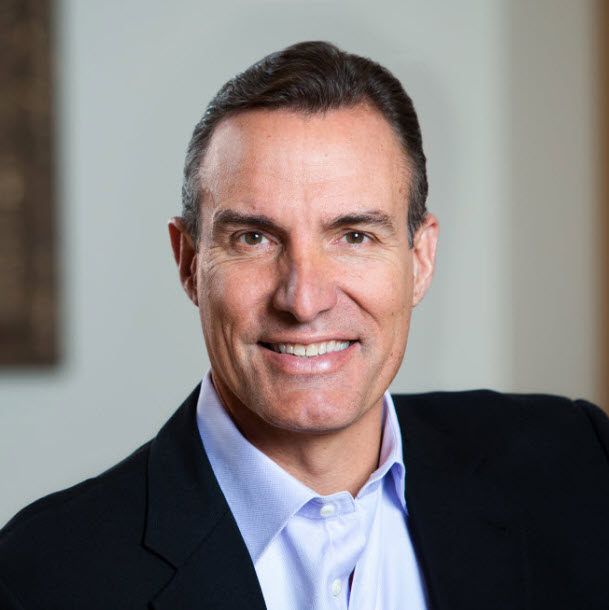U.S. scale-up o9 Solutions, a member of the World Economic Forum’s New Champions community, has earned a valuation of $2.7 billion by helping corporates integrate commercial, supply chain and financial plans and decisions to speed up their digital transformation. Now it is adding environmental, social and governance (ESG) measurements to the same AI software platform to help its clients reach their sustainability goals.
“Companies see supply chain management and sustainable transformation as two separate things but today in order to drive transformation the two need to be integrated,” says Stanton Thomas, o9’s Senior Vice President of Sustainability Solutions. “We believe that three to five years from now your supply chain practitioners will be sustainability managers as well, so it will be important for companies to have all of their digital tools dovetail with supply chain operations and planning. To really drive towards a path to Net Zero, companies will need to model the supply chain and run simulations using a digital supply chain twin.”
o9 is embedding sustainability across its product line by including environmental footprint, full traceability, ESG risk management and ESG-enabled business planning, says Thomas. To underscore its commitment, the firm invited former U.S. Vice President Al Gore, a long-standing green advocate, to be the keynote speaker at it aim10X global 2022 conference, which took place April 5-7.
The Dallas, Texas-based scale-up’s core supply chain planning business is booming in part because the COVID pandemic has caused severe supply chain disruptions. In a 2020 Statista survey, 41% of supply chain decision-makers in the automotive and transportation industry responded they had lost $50 million to $100 million due to supply chain issues related to the pandemic. “The key element many companies face is a lack of visibility into their supply chain,” says Thomas. Many have found the technology they were using – typically legacy enterprise systems augmented by spreadsheets – to be lacking. “While there was a push over the last two decades to move to Enterprise Resource Planning (ERP) platforms, it didn’t happen to the extent that was needed,” he says. “And now we are living in a world that has fundamentally changed.”
Corporations are retooling, says Thomas, “to gain visibility not only into what the classic supply chain look likes but to identify where the risks are, where these disruptions are occurring and how they can make them more resilient.” At the same they also want a better view of environmental social and governance risks to their operations and need help to both measure and reduce their environmental footprints. “Sustainability is top of mind at the C-Level and they realize that visibility is fundamental to solving the problem,” says Thomas. “Some supply chains are six levels deep. How are companies going to understand where the risks are without technology?” The answer, he says, is for companies to build digital twins that mirror their supply chains and factor in not just cost and lead times but also ESG.
“Most companies are still struggling to get to square one,” says Thomas. “I tell them to start with their own company.” The data required to build a digital supply chain twin needs to be extracted from siloed areas within the enterprise, using an automated process, and worked into a reporting process that is uploaded into the Cloud, where the data can be cleansed and harmonized so there is a common level of granularity. The clean data can then be fed into a digital twin model, and with the help of an AI-powered graph modeling tool, will be able to map Scope 1 and Scope 2 emissions and a company’s full environmental footprint, Thomas says. The environmental data can be used to drive against targets, bringing not just cost and service level and lead time but also carbon and other metrics into the optimization balance. “When you are projecting your company’s ability to balance supply and demand you can see what the footprint of serving that demand will look like and then you can begin to make adjustments,” says Thomas. “Many companies are already coordinating with suppliers, so we are offering them the tools to extend that collaboration to include ESG.” Companies can then begin to extend to various other tiers of their supply chain. “As they get further it can become more and more murky because some places are opaque on how they share data,” says Thomas. When this is the case, it is possible to supplement information fed to the digital twin with data from the market, he says. “There are operational adjustments that you make within a given network but to get the real bang for your buck you need to alter your network to be more sustainable,” Thomas says. And, as the saying goes, you can’t manage what you can’t measure.
A recent survey by Boston Consulting Group (BCG) of 1,300 companies around the globe found that only 11% reduced their emissions in line with their stated ambitions over the past five years. What’s more, many companies are underestimating their carbon footprint by an average of 30% to 40%, in part because they are not measuring so-called Scope 3 indirect emissions that occur in their supply chains. A whole crop of new startups have launched during the pandemic that focus on helping companies calculate their Scope 3 supply chain transmissions, such as Sweep, SINAI, Watershed, Plan A, Persefoni, Measurabl, Envizi, and Emitwise.
Thomas says carbon tracking is not enough. “The real need in the future is to drive change,” he says. “Carbon tracking tools allow you to establish projects but, ultimately in the context of the supply chain, there is a need to link this data to forward-planning processes.”
o9 currently serves seven industries but plans to use $295 million in funding raised in January to expand its focus. While o9 already works with the automotive, steel and aluminum sectors, the mining sector is the first mile for car and manufacturers in other sectors. The company plans to add mining because “we need to cover every link in the chain if we are going to help companies become more sustainable by providing them with actual data rather than modeled data,” Thomas says. “The holy grail is to provide end-users with a digital passport that travels with the product. You can’t do that unless you cover every link in the chain for an industry.”
o9 is listed as a “visionary” company in Gartner’s 2021 Magic Quadrant of companies in the supply chain planning market, along with GAINSystems, Arkieva and Adexa. Gartner says o9’s use of an enterprise knowledge graph gives it a “superior capability in the way it can create and manage the model of the physical supply chain and its vision for the evolution of this into a full digital supply chain twin is strong.” Gartner scored o9 above average for its innovation and product strategy, including its vision for AI, data sources/management/latency/granularity, speed and scalability, and range of analytics.
o9, which was co-founded in 2009 by CEO Chakri Gottemukkala and Chairman Sanjiv Sithu, was recently named as one of the Americas’ Fastest-Growing Companies 2022 by the Financial Times, ranking number 118 out of the 500 companies (it was ranked 133 in 2021).
The company is one of several members of the Forum’s New Champions community that is proving that companies can be profitable while having a positive impact on the planet, says Olivier Woeffray, the Forum’s Practice Lead, Strategic Intelligence.
This article is content that would normally only be available to subscribers. Sign up for a four-week free trial to see what you have been missing.







